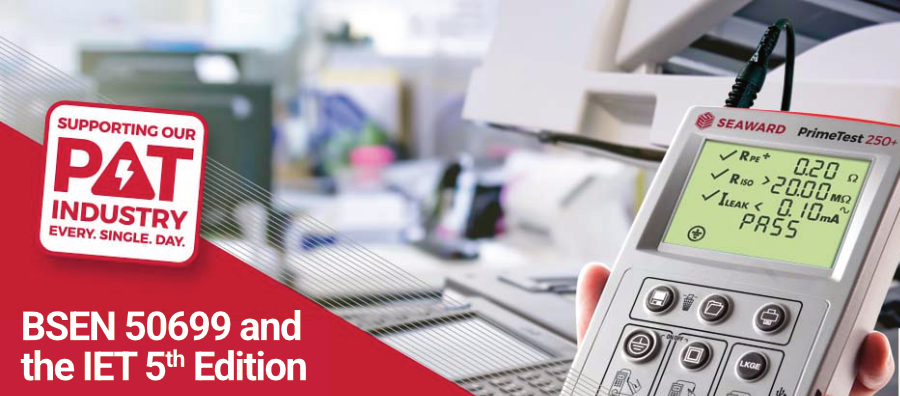
First approved by CENELEC (European Committee for Electrotechnical Standardisation), EN 50699 was adopted by the BSI (British Standard Institute) and first published in the UK back in March 2021.
Titled ‘Recurrent testing of electrical equipment’, the document aims to aid employers to comply with European Directive 2009/104, ‘Minimum requirements for the use of Work Equipment by workers at work’. It covers the requirements for testing electrical equipment and appliances to verify the safety of the equipment under test.
But where does this leave the IET’s 5th edition for In-service Inspection and Testing of Electrical Equipment?
This code of practice was introduced in September 2020, replacing the 4th edition released in 2012. Up until 2021 (and the introduction of BSEN 50699), the IET’s 5th edition guidance was considered a Bible to those in the field.
At the time of writing, the 5th edition still appears to be the most prevalent document, but this could change with the misconception that British Standards are statutory documents.
It’s important to understand that both documents are valid sets of guidance and that it is the decision of the individual testing, or the organisation, to choose which one they wish to adopt.
What are the differences?
Let’s take a look at the different electrical tests, and compare both the IET’s and British Standard’s guidance:
Earth continuity testing
There is a significant difference comparing the pass/fail limits of this test:
- IET:
≤0.1Ω +R where +R equals the resistance of the cable connected to the appliance.
+R is typically calculated using a table within the code of practice that provides values depending on cable CSA and length - BSEN 50699:
0.3Ω (up to 5m of cable length) + 0.1Ω for every additional 7.5m of cable (up to 1.5mm CSA). Maximum limit of 1Ω.
Example: an appliance powered by 10m of 1.0mm cable would have a pass limit of ≤0.295Ω adopting the IET’s 5th edition code of practice, but ≤0.4Ω adopting BSEN 50699
Insulation resistance testing
Both the IET and British Standard adopt the same guidance for insulation resistance testing:
- 500V / 250V test voltages to be applied
- Class 1 appliances: ≥ 1MΩ
- Class 2 appliances: ≥ 2MΩ
- British Standard also suggests that equipment containing heating elements: ≥ 0.3MΩ
Leakage testing
Again, some differences comparing the IET and British Standard:
- IET:
Fixed limit of 5mA (both touch current and PE conductor tests) - BSEN 50699:
General equipment: 3.5mA (PE conductor test)
Equipment with heating elements and more than 3.5kW power consumption: 1mA/kW, maximum of 10mA (PE conductor test)
Touch current test: 0.5mA
Class 1 appliance, 2 metres of 1.0mm CSA
| Pass or Fail - IET | Test Type | Reading Obtained | Pass or Fail- BSEN 50699 |
|---|---|---|---|
| x | Earth Continuity | 0.15Ω | ✔ |
| ✔ | Insulation resistance | 6.99MΩ | ✔ |
| ✔ | Protective conductor current | 3.85mA | x |
For any further information about PAT testing equipment, PAT training requirements, PAT tester calibration, PAT tester hire or perhaps if you’re confused about which guidance document to adopt when PAT testing, we welcome your call on 0113 248 99 66 or enquiry through our online form.
